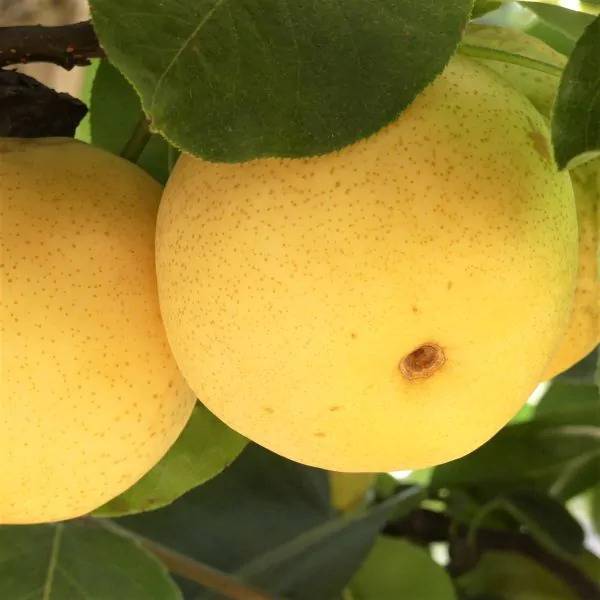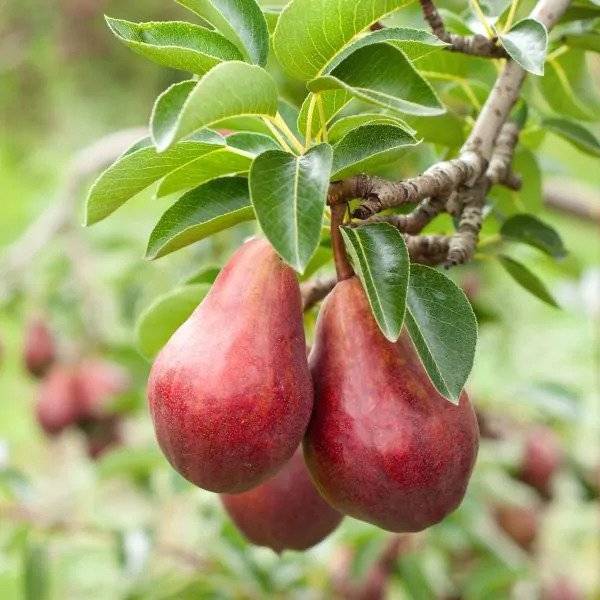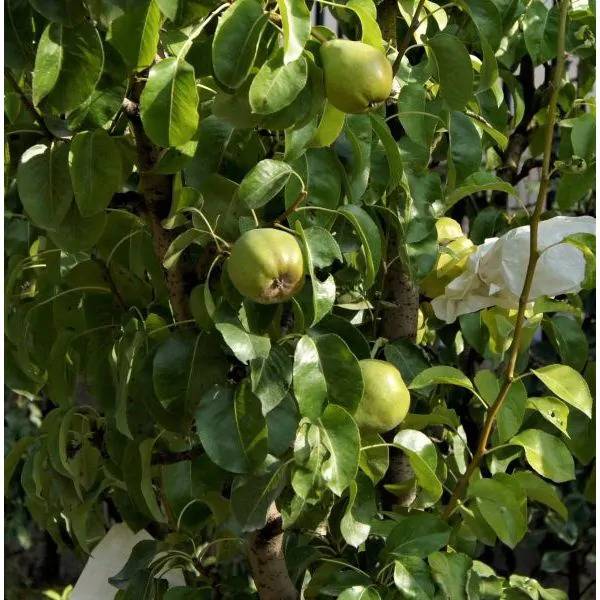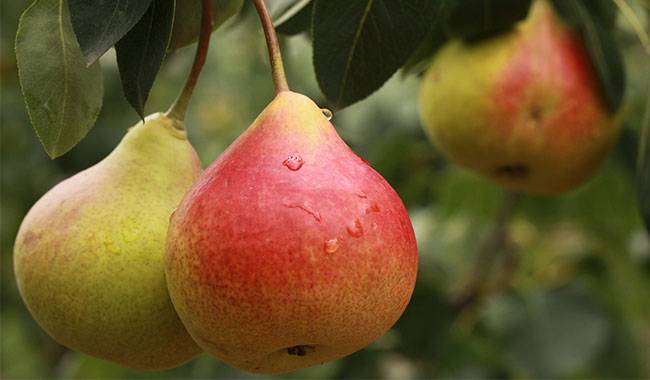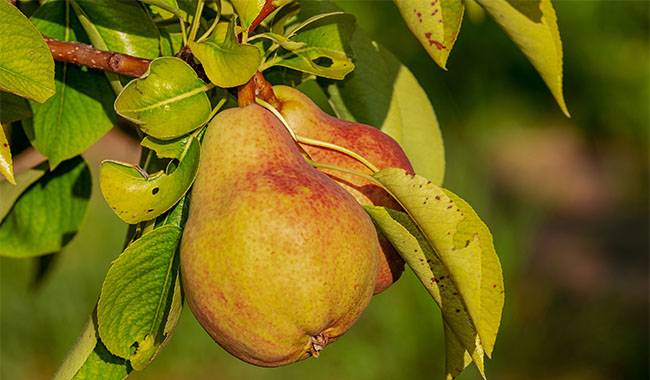
The pear is considered quite a capricious tree. It often suffers from frost and disease, which is why there are quite a few industrial pear orchards in our country. Private gardeners also often complain about this culture, not only about its capriciousness to the climate, but also about the fact that pears often do not bloom and do not form fruits for a long time after planting, sometimes they can have quite abundant flowers, but they also do not give any harvest. Today will discuss the reasons for this phenomenon of pear tree flowers but no fruit.
PEAR VARIETIES
The most insignificant reason why pears do not bear fruit is their varietal character. It is a biological trait, there is nothing wrong with it, and it does not bring anything to the owner of the garden except a few extra years of lazy waiting. In order not to worry about the seedlings you buy not flowering and bearing fruit after planting as expected, you need to know when a particular variety of pear will enter the fruiting stage before you buy it.
Almost every pear variety has its own terminology. It does not make sense to list the entry fruiting period of each variety so that we will give the approximate fruiting period of the most known and commonly encountered varieties (in gardens and nurseries).
The varieties of common pears are as follows.
Forelle Pear
Bosc Pear (Kaiser Pears)
Bartlett Pear (Williams pear, Williams’ Bon Chrétien pear)
Taylor’s Gold Pear (Gold Pear, Taylor’s Golden)
Anjous Pear (Anjou, d’Anjou)
Asian Pear (nashi pear, Japanese pear)
Comice (Doyenne du Comice, Christmas pear)
Regarding the age of the saplings, when pear plants are planted as annuals, they root faster, and the time to fruiting can be reduced by one year. This is not usually the case when growing biennial plants because it is very difficult to dig up biennial pears from the nursery, they have a longer disease period, and the period to fruiting can be about a year later.
Of course, everything is improving, and now there are new rootstocks on which pears bear faster, waiting for the rootstock to extend the time to fruiting by a few years.
LACK OF NUTRIENTS IN THE SOIL
The second reason why pear trees do not bloom and bear fruit for a long time is the lack of nutrients. With this deficiency, the pear seems to fall asleep, and all processes in the plant happen slowly. However, during this period, the root system can develop actively. It grows in depth and width.
The root system develops in search of nutrients, and as long as the roots are growing and there are not enough nutrients, no fruit will be formed. In this case, pears either do not flower at all or flower but do not bear fruit, forming ovaries, but the ovaries will soon fall off one by one.
In order to compensate for the lack of nutrients under the pear tree, fertilizers need to be applied, but you should be very careful. For example, if the soil is oversaturated with nitrogen, the pears will start to grow actively, forming vegetation – leaves, shoots – but not flowers.
To properly compensate for nutrient deficiencies, it is recommended to have the soil analyzed in a proper laboratory. Only a detailed soil analysis will show which nutrients you need in deficiency and excess.
If you fertilize without knowing what is present in the soil, you may be over-fertilizing and under-fertilizing, which could not only make the situation worse but also make it worse.
Let’s imagine that we know the soil composition, and if we don’t have enough of one important element, we should add nitrogen, potassium, and phosphorus.
You should know that the amount of nitrogen applied under the pear tree is only appropriate in the spring. Given that pears are not characterized by record winter tolerance, if we treat this cultivated nitrogen in the second half of the summer or, worse, in the fall, the pears can continue to grow actively and freeze directly in winter without having time to harden. Phosphorus and potassium can be applied in spring, summer, and autumn.
The approximate amount and date of fertilization is early spring (during the blooming of buds), the next period is early summer, the next period is mid-summer, and the end of fertilization is the end of the first month of autumn.
At the beginning of the growing season, which usually depends on the time of spring on the calendar, can be observed from the beginning of April to mid-April, when the pears drop their leaves, and you can add under it 2.2 Lb (1 kg) of completely rotted manure or humus with 300 g of charcoal. It is recommended to add also nitroglycerin, 19 g per bucket of water (2.5 Gal), for each pear to dissolve.
In early summer, the plants should be supplemented with phosphorus in the form of calcium superphosphate and potassium sulfate. The amount of calcium superphosphate under pear trees is 13 g. It should be made in a dry form in the soil previously loosened and watered, which can be covered with a layer of humus after the application of the fertilizer. Potassium sulphate is best applied in the dissolved form at a dosage of 10 grams per bucket of water (2.5 Gal).
In mid-summer, it is also advisable to apply calcium superphosphate and potassium sulfate in the same quantity and form as in early summer.
In the fall, it is also recommended to fertilize with half of the same fertilizer as in the summer.
You should also keep in mind that pear trees may bloom without fruit or drop their ovaries when the soil is excessively wet due to heavy rains, excessive watering, or groundwater too close – preferably 100inch (2.5 meters).
Pears may not flower or bear fruit but not produce on overly acidic soils. Considering that pears prefer neutral soil, acidic soil should be treated with lime at the rate of 200 grams of lime per 11 square feet. However, this rate depends on the acidity of the soil and its composition, i.e., what kind of soil – sandy, loamy.
To find out if the soil is acidic, you can indicate an increase in soil acidity to the plants growing on it: horsetail, nettles. If the soil is full of grass – which it should not be – sod is only allowed between the rows, but not in the root zone – or if the soil has been turned over, you can use a kit consisting of litmus paper and a color scale.
PLANTING ERRORS
Pear trees are very sensitive to incorrect planting: it is important to maintain the depth of the root neck, and it is best to plant pear seedlings in the same way as they were previously planted in the nursery. Failure to follow these basic rules can lead to serious delays in the flowering and fruiting of pears.
Pear saplings must be placed in the soil so that the root neck (this is where the root system enters the trunk, not the grafting site as many people mistakenly believe) is at the soil level. If the root neck sinks, the pear may start fruiting years later than it should. If the root neck is left above soil level, the pear root system can freeze, especially in such winters when there has been a frost and no or little snow.
In such winters, it is often observed that the root system is frozen through, often the youngest, the most important for the plant nutrition, is restored during the vegetative period, but in this case, the pear will not bear fruit, and it will be busy restoring the root system.
When planting pears, it is also important to consider both sides of the light. As you know very well, the pears in the nursery are realized by “annual seedlings” due to the rapid development of the seedlings, their root system, and above-ground parts.
When planting, first-year students can be sick in a new place for a long time and take root, thus delaying the entry into the fruiting period of the pears. To avoid this, it is necessary to place the seedlings so that the side facing the south appears again.
To find out which side of the sapling faces south and which side faces north, you can carefully examine the bark of the sapling – if it is dark as if it was sunburned, then it is the southern side, and if it is light, then it is the northern side.
By the way, if you have planted a pear sapling incorrectly and the root neck is buried or, on the contrary, strongly above the soil surface, this situation can be tried to be corrected. For example, if the root neck is buried, you can try to dig up the tree and pour the soil under its roots (of course, this is possible if the tree was planted a year ago, at most two years ago), and if the root neck is strongly above the soil surface, you can dip the trunk into the soil and press it well.
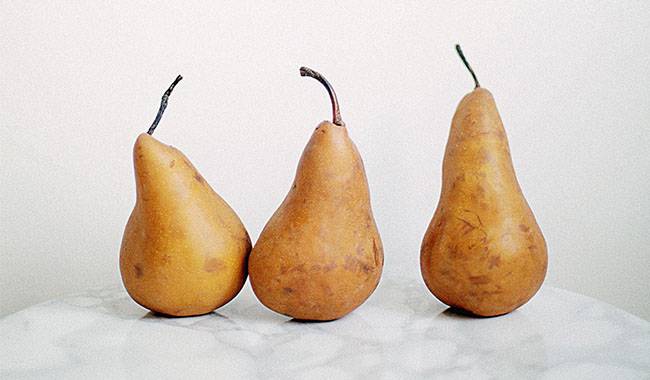
PEARS – WILD
Sometimes, especially when you do not buy seedlings in a nursery, as we always recommend, but “by hand” in the market, pear trees can develop very well and positively but do not flower at all for many years. This is the case if you are sold not a pear variety grafted on a rootstock but the usual pear seedlings that is wild ones.
In this case, even if you hold your breath and wait for the fruit, you will be disappointed – the pear fruit will be small and sour, while the plant itself grows huge and can exceed 32foot (10 meters) in height. Unfortunately, in this case, it is quite difficult to make some reasonable suggestions to correct the situation.
Some gardeners have cut down part of the tree, thus reducing its growth, and have grafted plugs of different species into the canopy, but not everyone can do this or has the desire to do so. All that remains is to cut down the tree and the grubs and plant new varieties of saplings.
To understand that you are selling savages – you need to carefully check the base of the pear sapling above the root neck, about 2inch (5 cm). At this place, the grafting point should be visible, the trunk should not be completely straight from the roots, there should be no thorns on the trunk, which are often characteristic of savages, and the seedling itself should not be too big and tall.
Usually, a one-year-old pear tree variety is 80inch (2m) long, with thick roots and two to three branches. Of course, this depends a lot on the variety. For example, ‘Redspire’ and ‘Aristocrat’ are the tallest ornamental pears and can reach a height of 50 feet (15 meters).
INSUFFICIENT LIGHT
Mistakes can also occur when choosing their placement on the plot. Often, gardeners plant plants in the shade given the pear’s tall stature and spreading canopy, hoping that the pear will eventually grow and get out of the shade due to its height. In reality, this is certainly logical but misguided.
During all this time, while the pear will gain growth and, stretching and often bending, leave the shade, it will most likely not bloom and bear fruit, a period that could be a decade or more. In fact, the pear is very sensitive to light, it needs a lot of it, and if there is not enough of it, it will not produce a harvest.
Of course, given that the pear is not outstandingly wintered hardy, it can be planted under protection, such as the walls of a house, a fence, or other large trees with a dense canopy, provided that this protection is located completely north to avoid the cold north winds.
DAMAGE TO PEAR TREES BY PESTS
Another reason for the lack of pear production is the influence of pests. For example, it positively affects pear buds, literally, not allowing them to fully develop pear blossoms, which can be fought with the drug “broad-spectrum fungicide.” Pests like apple blossom beetle, which cause damage and pears, manifest themselves in the form of extensive damage to the flowers. This pest can be controlled with the drug “Kinmix insecticide is one of the most common preparations for pest control.”
Pears can also be damaged by the pear moth, whose caterpillars penetrate the ovary and eat the seed chamber, causing the ovary to fall off and no fruit. However, it is possible to get rid of this moth by treating pear plants with Ivano. Treatment can be applied around mid-May when the moths are observed in flight and then repeated 2-3 weeks later.
PEARS BLOOM BUT DO NOT BEAR FRUIT
Sometimes pears bloom profusely but do not bear fruit, which can be due to two reasons – lack of pollination and a result of frost.
To solve the pollination problem, it is necessary to have at least two varieties of pears blooming at the same time on the plot. They will pollinate each other and help to stabilize the yield every year.
To increase the sensitivity of female pollen, pear trees should be sprayed with boric acid during heavy flowering, preparing a 1% solution of boric acid.
It is difficult to solve the problem of exposure to spring frosts. Frosts can destroy the ovaries, which are already in the initial stages of development, or make the flowers sterile and immune to pollen. Sometimes gardeners solve frost problems by fumigating their plots during the most dangerous times, but this doesn’t always work as well as it should.
If frost occurs every year in your area, it is advisable to buy varieties that bloom later in the season, i.e., fall and winter varieties.
Conclusion. We have cited the most massive common reasons why pear trees do not bear fruit when they do. If you know these reasons, you can avoid them, and you will always enjoy a bumper crop of pears.
More related information about growing pear plants


